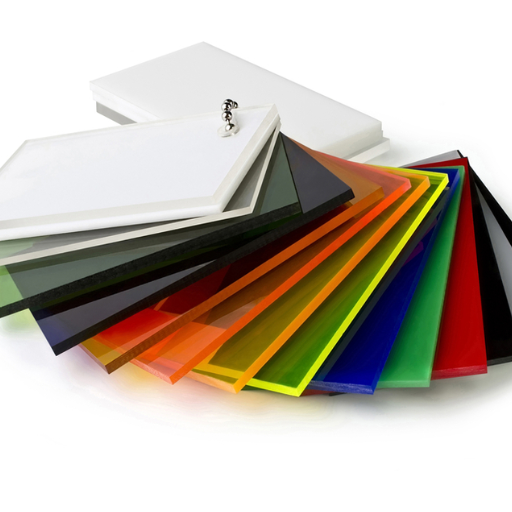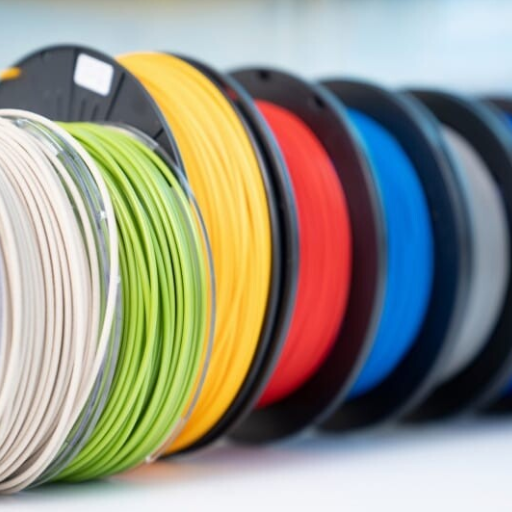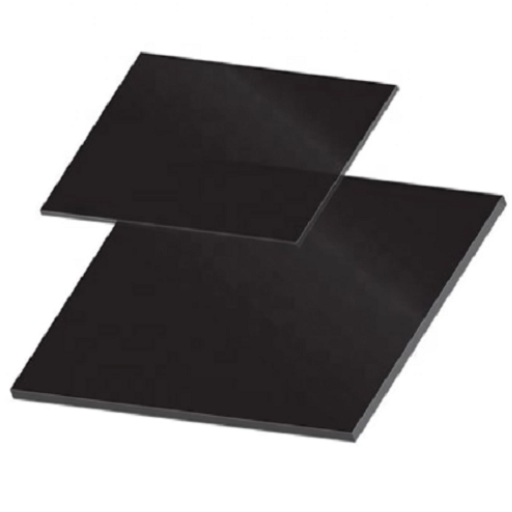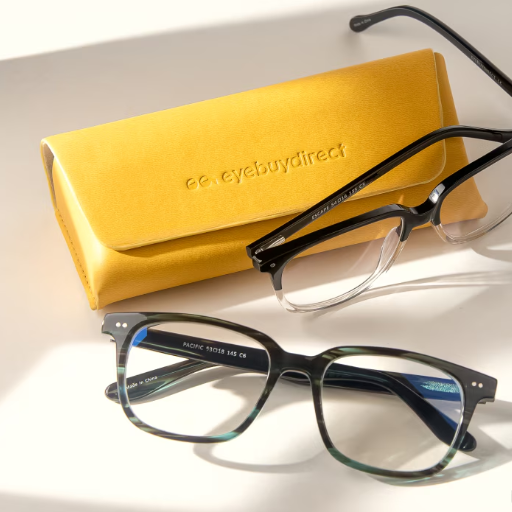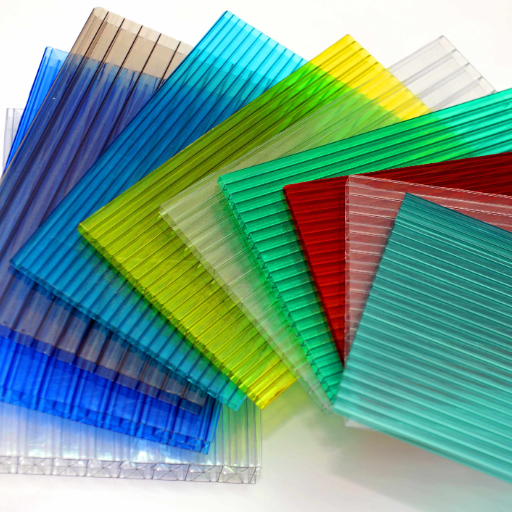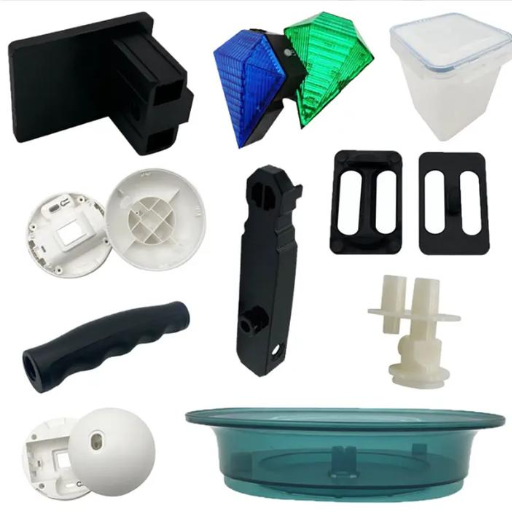Polyoxymethylene, commonly referred to as acetal or polyacetal, is an engineering thermoplastic characterized by its remarkable strength, high stiffness, and frictionless qualities. Black POM is gaining popularity in various sectors because of its improved mechanical properties, UV protection, and good looks. This guide examines Black POM in detail regarding its chemical structure, fundamental characteristics, and broad spectrum of uses. Furthermore, the article discusses its processing methods, manufacturing benefits, and contribution to sustainable engineering design solutions. Ultimately, the audience will appreciate the relevance of Black POM in the automotive, consumer goods, and industrial design fields. Engineers, product designers, and industrial fashioners will find this guide informative in leveraging the capabilities of Black POM within their designs.
What is POM Plastic and How is it Made?

Polyoxymethylene (POM) is an engineering thermoplastic with advanced features and superior mechanical properties known as acetal or polyacetal. It is a polymer synthesized by a condensation polymerization process of formaldehyde or its acetals. It is a crystalline thermoplastic with a combination of high tensile strength, low coefficient of friction, and good durability.
The synthesis of POM begins with methanol, which is first converted to formaldehyde by catalytic oxidation. POM resin is obtained by polymerization of formaldehyde. To modify properties, the polymeric resin can be mixed with stabilizing agents, coloring substances, and fibers. POM is produced in two formulations: a homopolymer that offers better mechanical strength and rigidity and a copolymer which has better resistance to heat and destruction. Components made of this polymer are widely used in sophisticated technology.
Understanding Polyoxymethylene
Polyoxymethylene (POM), commonly referred to as acetal, is a thermoplastic polymer admired for its versatile performance in many engineering and industrial fields. Among its many strong points are impressive mechanical properties including tensile strength, stiffness, low friction, and abrasion resistance. These qualities make POM reliable for applications where precision and durability is required, such as in the design of gears bearings and bushings.
POM can be obtained through formaldehyde polymerization or through the processing of trioxane, which is a formaldehyde derivative. Performance characteristics may vary depending on the type of POM material used; homopolymer or copolymer. Homopolymer POM has a higher crystallinity and is stronger and more rigid which makes it perfect for load-bearing parts. On the other hand, copolymer POM has superior thermal stability and resistance to chemical degradation in harsher environments such as being exposed to acidic or alkaline mediums.
Its distinctive features stem from the material’s ordered, crystalline molecular structure which grants the ability to withstand dimensional changes due to mechanical stress and temperature changes. This, accompanied by the fact that it is relatively light, makes it an ideal thermoplastic for the automotive and consumer electronics industries as well as the healthcare sector where reliability coupled with precision is a must. Furthermore, POM has broad application potential due to its good machinability and moldability.
The Manufacturing Process of POM
The synthesis of Polyoxymethylene (POM) involves the polymerization of formaldehyde or its tri-oxide form, trioxane, in specially designed industrial facilities. As the first step in this synthesis, formaldehyde is harvested and stabilized; subsequently, the polymerization reaction takes place with the aid of acidic oxides or anionic stabilizers that catalyze the reaction. These catalysts allow for the formation of high molecular weight chains that are essential for POM’s attractive mechanical features.
After polymerization is complete, the resulting crude polymer undergoes a stabilization procedure in an attempt to lower the degradation. This stabilization step consists mostly of the end-cap reaction of molecular chains which reacts out the hydroxyl groups and therefore increases chemical and thermal stability. Thereafter, the material is placed in a pelletizer where the resin is mixed with the desired stabilizers and lubricants and processed into pellets to obtain the required form for specific uses.
The final POM pellets are ready to be distributed to manufacturers to be processed by injection molding or extrusion to obtain the desired components. The POM homopolymer and copolymer types are both dependent on this exact and refined method of production to guarantee consistent quality, elevated performance, and adaptability for industrial purposes.
Differences Between Homopolymer and Copolymer
The POM homopolymer and copolymer are differentiated primarily by their molecular structure and efficiency. POM homopolymer is comprised of repeating single monomer units, which lead to a highly crystalline structure. This results in improved mechanical properties consideration such as rigidity, strength, and hardness. However, this high crystallinity also brings about thermal instability and low chemical resistance due to acidic or basic environments.
In contrast, POM copolymer includes small concentrations of comonomers which interrupt the orderly crystalline structure of the copolymer. This alteration increases thermal stability, thus lessening degradation during processing, while also increasing resistance to acids, bases, and solvents. The copolymer is also more environmentally friendly and durable than the homopolymer, which makes it better for a broader scope of use, although the copolymer is marginally less rigid and strong compared to the homopolymer.
In the end, it all comes to choosing between copolymer and homopolymer which usually depends on the particular requirement of the application. Homopolymer is preferred for applications which require high mechanical strength while copolymer excels in cases where stability against thermal and chemical stresses is needed. All POM types have in common benefits of low friction, wear resistance, and dimensional stability.
Why is Black POM a Popular Choice in Industrial Applications?

Due to its enhanced durability and superior UV resistance compared to standard POM, Black POM is frequently used in industrial work. Black POM’s addition of stabilizing agents and pigments improves resilience to prolonged exposure to sunlight. In addition to being UV resistant, Black POM also has low friction, excellent wearing resistance, dimensional, and stability capable of meeting the hardest of industrial demands. In addition, thermally and chemical stress resistance contributes to its wide incorporation in the automotive, aerospace, and construction industries.
Excellent Mechanical Properties of Black POM
The ultramechanical properties of Black POM (polyoxymethylene) make this polymer exceptional. One of the most remarkable features is its high tensile strength, which guarantees exceptional performance, even under high stress. Coupled with a low coefficient of friction, Black POM is exceedingly wear-resistant and can work in applications that involve repetitive motions or rubbing against surfaces. It also has a remarkable resistance to creep, so it retains dimensions under prolonged mechanical loads. Its hardness and rigidity enable structural integrity to be maintained under varying forces, which makes it ideal for precision parts such as gears, bushings, and bearings.
In addition to this, Black POM possesses incredible impact toughness which allows it to withstand impact without deformation or cracking. These mechanical features, alongside its resistance to UV exposure and annealing thermo-mechanical and chemical processing, ensures Black POM stands out as a dynamic and durable industrial component over industries ranging from automotive, aerospace and heavy machinery.
High Strength and Stiffness: Key Features
Outstanding mechanical capabilities make Black POM an important material in the industry. Its impressive tensile strength accounts for a considerable amount of stress without causing irreversible deformation. Moreover, its rigidity contributes to the structural stability of critical components. One of its most distinguishing characteristics is the high modulus of elasticity, which enables precise dimensional tolerances to be maintained under load. In addition, Black POM surfaces exhibit excellent resistance to wear, fatigue, and creep under cyclic or sustained operational demands. Together with its ability to perform well at varying temperatures, these characteristics mark Black POM as an optimal choice for components required to withstand exceptional durability and performance.
Impact Resistance and Thermal Stability
Black POM displays how to go the extra mile when it comes to impact resistance and shock durability. This makes it an absorber that endures shattering stress while still extending life support in hostile temperatures and environments which is durable. Long-duration high-temperature oxidization super added fatigue makes it reliable in different industrial places like jawbreakers and sandwich dividers like aerospace and automotive. The extreme oxidation and thermal suppression combined enable the material to perform vigorously in high-performance applications. It is coupled with elasta agility and elasticity enables these traits to be endured Would you like to know more ways to layer?
How Does POM Perform in Various Environments?

Black POM, a type of polyoxymethylene, exhibits remarkable environmental versatility owing to its material characteristics. The material has high moisture, solvent, and chemical resistance, thus, it is useful in highly aggressive chemical environments. It also has high thermal stability as structural integrity and performance are maintained even with exposure to high temperatures over long periods. Furthermore, the low friction and good wear resistance properties of POM make it applicable in highly dynamic environments featuring constant mechanical motion such as in gears, bearings, and conveyor systems. These traits guarantee dependable service in the automotive, aerospace, and food processing industries where harsh working conditions are commonplace.
Temperature Range and Dimensional Stability
Even at extreme temperatures, usually from -40°F to 230°F (-40°C to 110°C), POM demonstrates remarkable dimensional stability, though expansion and grade may contribute to the differences. Because of POM’s low rate of thermal expansion, it can maintain its dimensions even when subjected to thermal fluctuations which is essential for precision processes like rotating machinery and automotive parts where there is limited space to work with. The low expansion ratio and durability of POM against thermal deformation make it ideal for these harsh conditions that require long-term reliability while being mechanically strained and experiencing varying temperatures. Withstanding these extremes showcases its proficiency in tough engineering tasks.
Resistance to Chemicals and Solvents
POM is reliable in demanding industrial environments due to its excellent resistance to a wide range of chemicals and solvents. Its stability when exposed to hydrocarbons, alcohols, esters, and some alkaline solutions is beneficial in chemical-requiring applications. On the other hand, POM can be degraded by strong acids or oxidizing agents like concentrated nitric acid and chlorine products. This resilience together with the mechanical properties of POM allows for extensive utilization of POM in production processes and environments where exposure to corrosive solvents is the norm. Its durability and performance in combination with various engineering applications is what makes POM truly exceptional.
Performance in High-Friction Applications
Polyoxymethylene or POM is ideally suited for high-friction applications due to its low coefficient of friction and superb wear resistance. These attributes stem from its dense crystalline structure which facilitates smooth surface interaction even at heavy loads. POM is extensively utilized in bearings, gears, and sliding parts because of its ability to self-lubricate and reduce the maintenance burden. Moreover, its stability in shape guarantees constant performance over long periods in dynamic applications. Polyoxymethylene has become a material of choice for critical components in automotive, industrial, and consumer equipment because of its high frictional endurance and the capability to withstand repeated motion without significant wear.
What are the Common Uses of POM in Different Industries?

Polyoxymethylene or POM is ideally suited for high-friction applications due to its low coefficient of friction and superb wear resistance. These attributes stem from its dense crystalline structure which facilitates smooth surface interaction even at heavy loads. POM is extensively utilized in bearings, gears, and sliding parts because of its ability to self-lubricate and reduce the maintenance burden. Moreover, its stability in shape guarantees constant performance over long periods in dynamic applications. Polyoxymethylene has become a material of choice for critical components in automotive, industrial, and consumer equipment because of its high frictional endurance and the capability to withstand repeated motion without significant wear.
Automotive Applications: Gears and Bearings
Due to its outstanding mechanical and tribological characteristics, Polyoxymethylene (POM) is commonly used in the automotive industry, more so, for gears and bearings. Power transmission systems critical for geared power machines are dynamic systems, and POM gears have tensile strength, wear resistance, and excellent dimensional stability, all of which are critically important. Additionally, because of minimal energy loss and smooth operation enabled by a low coefficient of friction, POM is preferred over others in gear manufacturing.
POM has fatigue resistance from constant motion which allows it to be self-lubricating, enabling long life with minimal bearing lubrication. These benefits decrease the need for maintenance and prolong the lifetime of components such as steering system parts, wiper assemblies, and seat mechanisms. Due to this, POM is integral in the automotive industry which is precision driven and requires highly durable materials.
Role of POM in CNC Machining
Just like in the case of the use of Polyoxymethylene (POM), its remarkable machinability and properties aid it in taking the lead during CNC machining. POM is noted for having a robust stiffness, low friction, and outstanding dimensional stability which makes it suitable while fabricating components of precise tolerances. For the manufacturers, POM becomes a cost-efficient material due to low wear and abrasion resistance during the CNC Machining which leads to tool wear and efficient material removal. Apart from these, POM is thermally resistant and has low moisture absorption which makes it ideal for parts like insulators, mechanical bushings, and housings. Along with these attributes, the reliability of POM in withstanding mechanical stresses makes it favorable for industries where precision as well as strength is required, including automotive, aerospace, and consumer electronics.
POM in Consumer Electronics and Appliances
Polyoxymethylene (POM) is critical to the consumer electronics and appliances industry because of its suited properties. Its high strength, durability, and dimensional stability allow for the precise manufacturing of components such as gears, buttons, bezels, connectors, and structural supports. POM reduces friction and wear, which enhances the lifespan and function of moving parts in appliances like washing machines, dishwashers, and blenders. In addition, its strong electrical insulator enhances safety and reliability in electronics while its thermal resistance enables use in hot devices. Even in harsh operational settings, the material’s resistance to moisture and chemicals guarantees performance, maintaining its significance in consumer technology manufacturing strides.
How to Work with POM Sheets and Raw Material?

Working with POM sheets and raw materials involves complex processes that must be followed with exacting care and precision. The cutting and machining of POM can be done with either a CNC mill or standard machining tools. However, these tools must be kept sharp and require frequent maintenance to avoid forming excess heat that could warp the material. Drilling must also be done… carefully. It should be done at a moderate speed with sufficient cooling to avoid stress crack formation. Due to the mechanics bondability being low with POM, adhesive bonding is generally difficult. Other forms of assembly such as mechanical fasteners or specialized welding (i.e. ultrasonic welding) are more effective. Other precautions must also be taken, such as not exposing finished parts to UV radiation, as this can degrade the material’s properties over time.
Machining and Fabrication Techniques
Machining is the process of selectively removing materials from a workpiece in a predetermined and planned manner with the help of tools like lathes, tools, and drills to give it the required shape and size. As a result, highly precise components with intricate geometries and tight tolerances are produced and the industry highly relies on this technique. Important methods are: turning – means rotating the workpiece against a stationary cutting tool; milling – means removing material when the tool rotates; and drilling – means producing holes.
On the other hand, fabrication focuses on the assembly of raw material products that can be steel, aluminum, or composites into their final form. Important techniques in fabrication are: cutting different materials with lasers or plasma cutters; welding components together; bending them into shape with press brakes; and assembling different parts of the product. This is very important in the construction, automotive industry, and aerospace industry.
Both machining and fabrication are greatly dependent on material characteristics, the accuracy of the tools, and the skill of the operator. Modern technological advances, such as self-operating machinery, have greatly improved the efficiency, repeatability, and accuracy of these methods to meet the rigorous standards of engineering and manufacturing.
Injection Molding with POM
The injection molding process using Polyoxymethylene (POM) is one of the most accurate manufacturing procedures utilized in the production of plastic components and parts. POM, also referred to as acetal, belongs to the family of thermoplastics and is noted for superior mechanical features such as exceptional stiffness, minimal friction, and stable dimensions. The process begins by heating solid POM pellets until they melt. The melted POM is injected into a mold under pressure. Because POM burns in a molten state, its low viscosity aids in filling detailed mold cavities. This ensures accurate duplication of elaborate geometries.
To enhance the injection molding procedure with POM, certain criteria must be achieved. The suggested melt temperature must be between 190 and 230 degrees centigrade, while the mold temperature must be set between 80 and 120 degrees centigrade, depending on the part quality and the cycle time. Such parameters must be set to optimize the quality of the end product. Additionally, the pumping pressure and the speed at which the molten resin is introduced into the mold cavity must be regulated carefully to avoid sink marks or flash. Drying POM resin is mandatory before molding because too much water can trigger hydrolytic degradation, which makes the final product’s mechanical features weaker.
Some of the post treatments may include relieving the internal stresses through annealing, surface enhancements to improve adhesion or aesthetic appearance for an application. All in all, the automotive, electrical, and consumer goods industries, where accuracy and functionality are necessitated, greatly benefit from POM’s multipurpose attributes, and robust characteristics.
Handling and Storage Tips for POM
Polyoxymethylene (POM), a high-performance thermoplastic, requires specific handling and storage measures to ensure its structural integrity and performance characteristics. Properly managing POM involves the following guidelines:
- Storage Conditions: POM should be stored in a dry, cool environment with a recommended temperature below 86°F (30°C) and relative humidity below 50%. This helps prevent moisture absorption, which could impact its dimensional stability.
- UV Protection: Avoid prolonged exposure of POM to direct sunlight or ultraviolet radiation, as this can degrade its mechanical properties over time. Storing the material in opaque, UV-protected packaging is ideal.
- Dust and Contaminants: Keep POM in sealed containers or its original packaging to prevent the accumulation of dust and contamination, which may interfere with processing and end-use performance.
- Handling Practices: When handling POM, always use clean tools and equipment to prevent surface contamination. Wear gloves as needed to avoid skin oils affecting the material, which can particularly be a concern in high-precision applications.
- Thermal Stability: During processing, avoid prolonged exposure to high temperatures above POM’s thermal decomposition point (approximately 446°F or 230°C). Overheating can release formaldehyde gas, necessitating proper ventilation and controlling process parameters carefully.
By adhering to these technical handling and storage practices, POM maintains its structural and functional qualities, ensuring optimal results in applications ranging from automotive components to industrial parts.
References
Frequently Asked Questions (FAQ)
Q: What is Black POM and why is it commonly known as acetal?
A: Black POM, or Polyoxymethylene, is a type of engineering plastic known for its high stiffness, low coefficient of friction, and excellent dimensional stability. It is commonly known as acetal because it is a type of polyacetal, a group of polymers characterized by their acetal group in the polymer chain.
Q: What are the key properties that make Black POM widely used in engineering applications?
A: Black POM is widely used due to its excellent dimensional stability, low friction, high impact resistance, and resistance to solvents and many chemicals. These properties make it suitable for precision parts, consumer goods, and applications that require high stiffness and rigidity.
Q: In what applications is Black POM commonly used?
A: Black POM is commonly used in applications like gears, fasteners, fuel system components, and a variety of seals. Its properties make it ideal for high temperature environments and precision engineering parts.
Q: How does Black POM compare to other thermoplastics?
A: Compared to other thermoplastics, Black POM offers excellent rigidity, a low coefficient of friction, and high resistance to impact. Its semi-crystalline structure contributes to its dimensional stability and resistance to wear, making it suitable for engineering applications.
Q: What makes Black POM resistant to chemical exposure?
A: Black POM’s resistance to chemical exposure is attributed to its semi-crystalline structure and polymerization process, which provide high resistance to solvents and many chemicals, making it a durable choice for industrial applications.
Q: Can Black POM withstand high temperatures?
A: Yes, Black POM can withstand high temperatures, which is why it is used in applications that require high-temperature resistance, such as automotive and industrial parts. POM resin offers excellent performance even in challenging thermal environments.
Q: What is the significance of the low coefficient of friction in Black POM?
A: The low coefficient of friction in Black POM is significant because it reduces wear and tear on moving parts, making it ideal for applications like gears and bearings. This property extends the lifespan of components and enhances performance.
Q: How does Black POM contribute to high precision in parts and gaskets?
A: Black POM contributes to high precision in parts and gaskets due to its excellent dimensional stability and surface finish. This ensures that components maintain their shape and size, providing reliable performance in precision applications.
Q: What is the role of formaldehyde in the composition of Black POM?
A: Formaldehyde is used in the polymerization process to create polyoxymethylene homopolymer, which is the base polymer for Black POM. This process results in a material with high stiffness and rigidity, making it suitable for engineering applications.







